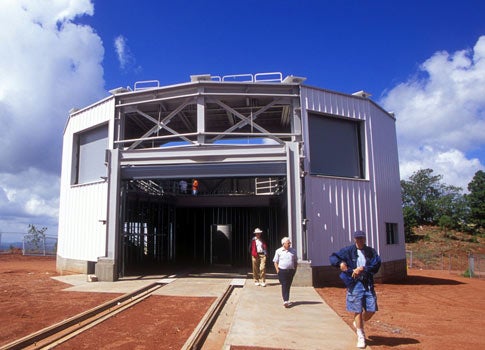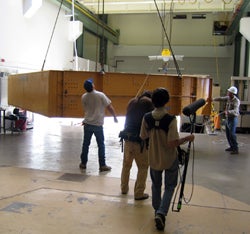The Discovery Channel Telescope (DCT), a joint project of Lowell Observatory and Discovery Communications, Inc., (DCI) moves closer to completion as University of Arizona optical scientists polish and figure the observatory’s 6,700-pound mirror. This delicate process seems appropriate for the 4.3-meter heart of the telescope, although it is only 100 millimeters thick.
“The DCT project is rapidly advancing towards being fully operational by late 2010,” says Byron Smith, Lowell’s DCT project manager. Expected to see first light in 2009, the DCT will be the fifth-largest telescope in the continental United States. Compared to others its size, this telescope boasts an unprecedented imaging area spanning 8° and multiple optical configurations — Prime Focus features the wide-field camera, and Ritchey-Chrétien (RC) utilizes high-resolution imaging and spectroscopy at both visible and near-infrared wavelengths.
Construction of the DCT facility, which houses the control room and other support facilities, continues to advance after the observatory’s exterior was completed in December 2007. A temporary roof was installed shortly afterwards. Interior projects — including dry-walling, electrical wiring, and plumbing — will be completed in spring 2007.
Primarily research-oriented, the DCT will allow Lowell to broadcast observations in real-time, thanks to the partnership with Discovery Communications, Inc. Educational programming will increase public awareness of astronomical discoveries — DCI reaches nearly 1 billion people in more than 150 countries. The new telescope will aid in studies of formation and evolution of planetary systems and galaxies, and increase Lowell’s observational capabilities.
Still in development are the mirror-coating chamber, the facility’s dome and control system, and the telescope mount, which is able to support instruments at both Prime and Cassegrain focal positions.
“We expect to have all the pieces together by the end of 2009, which gives us a year to tune, align, and debug, to ensure that the telescope will be operating smoothly,” Smith says.
Groundbreaking for the nearly $40 million telescope took place in July 2005. The facility is located in Happy Jack, Arizona, at a 7,760-foot altitude.











